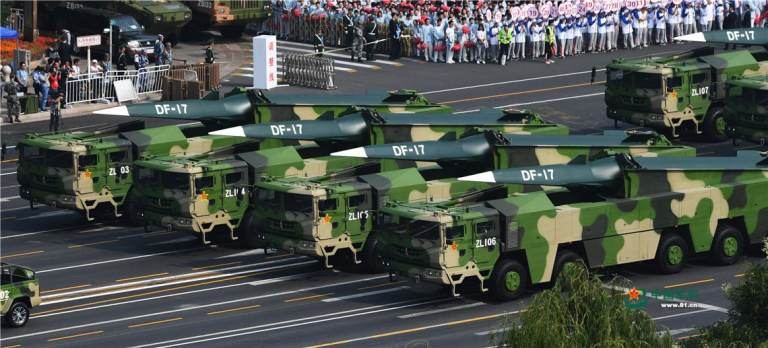Pakistan going for DF-17 Hypersonic Missiles in Dramatic Strategic Shift
Defence affairs - D.S.A
Indian defence outlets claim that Islamabad’s pursuit of this next-generation capability is driven by its need to counter India’s increasingly formidable multi-layered missile defence network.
The acquisition of hypersonic glide vehicle technology—capable of evading even the most sophisticated missile defence systems—could grant Pakistan a critical edge in both strategic deterrence and rapid precision strike capabilities.
Pakistan is believed to be exploring two potential avenues: a direct transfer of China’s DF-ZF HGV technology or a joint-development arrangement built on the existing intelligence-sharing and defence cooperation framework between Beijing and Islamabad.
Given the depth of China-Pakistan military ties and Beijing’s longstanding willingness to transfer sensitive technologies to its closest regional ally, the realisation of this missile deal appears to be only a matter of time.
China currently accounts for approximately 81 percent of Pakistan’s total arms imports over the past five years, solidifying its position as Islamabad’s primary weapons supplier and strategic lifeline in the face of India’s growing power projection.
Last week, Chinese defence sources disclosed that a comprehensive military aid package had been offered to Pakistan, including the J-35A fifth-generation stealth fighter, the HQ-19 long-range missile defence system, and the KJ-500 airborne early warning and control aircraft.
The announcement of this package, which followed closely on the heels of renewed Pakistan-India tensions, highlights China’s expanding role in reshaping the regional balance of power through military-industrial diplomacy.
“The Chinese military aid package to Pakistan marks a major diplomatic and defence achievement under Prime Minister Shehbaz Sharif’s leadership,” said an official government statement.
“Aset-aset ketenteraan berteknologi tinggi akan meningkatkan secara mendadak kemampuan Tentera Udara Pakistan dan sistem pertahanan udara selaras dengan tahap tinggi peperangan pada masa ini,” the statement added.
According to data from the Stockholm International Peace Research Institute (SIPRI), China’s arms exports to Pakistan totalled over US$5.28 billion (RM23.2 billion) between 2018 and 2023—representing 63 percent of its global arms exports during that period.
This marks a seven percent increase from the preceding five-year window (2015–2020), when 74 percent of Pakistan’s arms imports originated from China, underscoring the increasingly defence-centric nature of bilateral relations.
If realised, Pakistan’s acquisition of the DF-17—capable of delivering a hypersonic glide vehicle at speeds between Mach 5 and Mach 10—would fundamentally upend the current deterrence balance between Islamabad and New Delhi.
The missile’s 2,000–2,500km range would place nearly all of India’s strategic command centres, nuclear infrastructure, and high-value urban targets within minutes of a Pakistani launch.
Such a capability would significantly degrade India’s reliance on static air and missile defences, including the Russian-made S-400 Triumf, as well as indigenous systems like the Barak-8 and Akash.
From a geopolitical perspective, the transfer of DF-17 to Pakistan would allow China to entrench itself further in South Asia’s strategic architecture, leveraging its advanced weapon systems to tip the regional power equation in Islamabad’s favour.
The system’s ability to conduct pre-emptive strikes against India’s mobile assets—including Agni-series ballistic missile platforms and Rafale fighter squadrons—would enhance Pakistan’s strike options in high-tempo conflict scenarios.
Moreover, possession of such a capability would force India to accelerate its own hypersonic weapons programs, including reviving the stalled BrahMos-II project or deepening hypersonic research partnerships with the United States and Russia.



Comments
Post a Comment